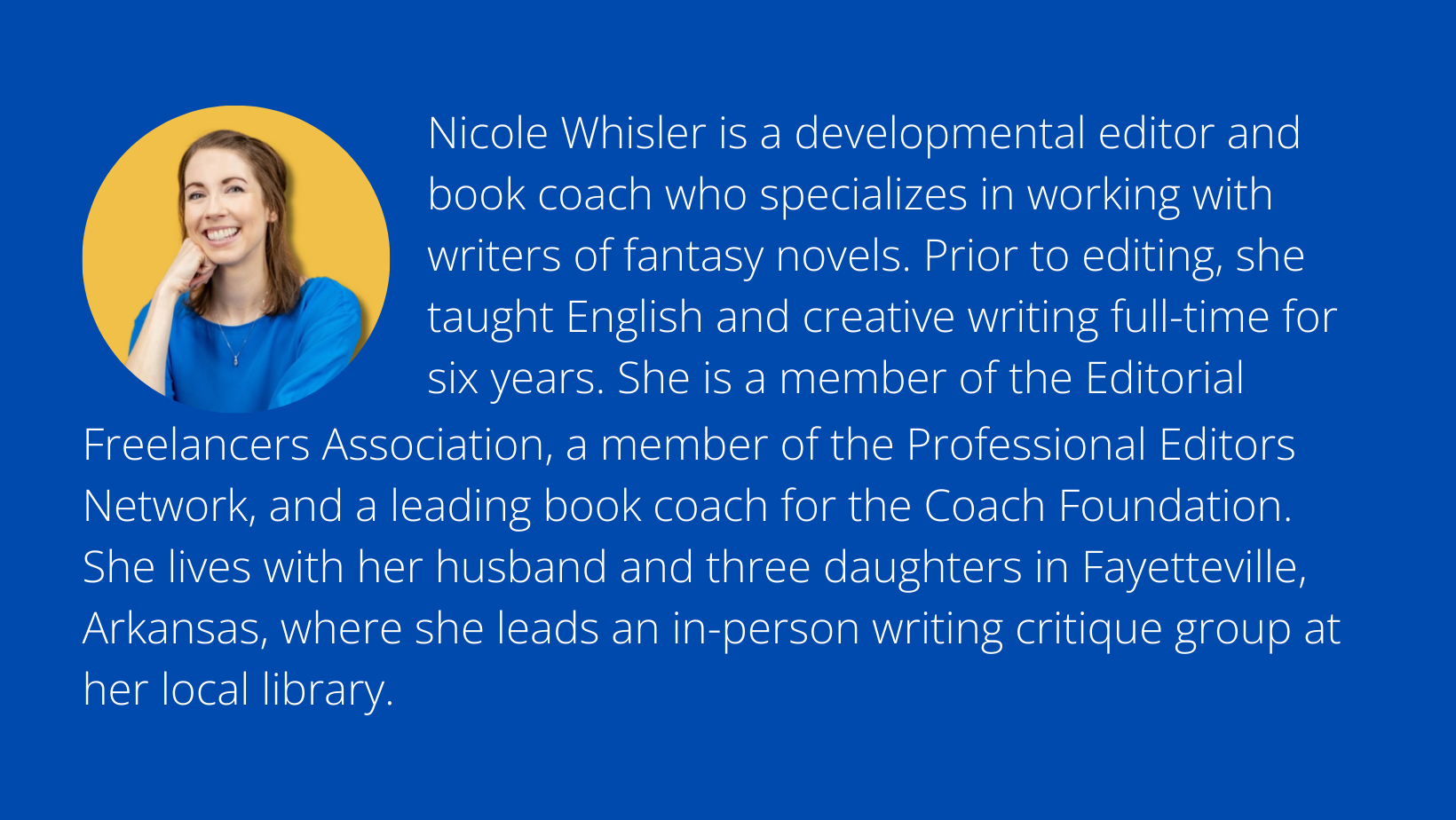Whisler Edits Blog

Why You Should Write in Scenes, Not Chapters
Discover in this post …
a clear distinction between “scene” and “chapter.”
two reasons to write in scenes rather than chapters during your first draft.
how to control pacing and suspense by breaking your scenes into chapters by your final draft.
Let’s Begin with a “But”
Hi writer! Yes, I’m aware it’s risky business, including “should” in the title of this blog post. What works for one writer might not work for another, and some writers get tired of hearing how they should be writing.
BUT!
I’m going to challenge you anyway and let you in on a method I fully believe is worth trying—a method that can get readers to turn pages even faster because they can’t handle the suspense!
So let’s get right to it. We’ll define what I mean by “scene” vs. “chapter,” then jump into exactly how writing in scenes can benefit you.
Scenes vs. Chapters

Most readers and writers instinctively recognize a scene when they see one. In essence, it’s an arc of change within your novel that contains its own beginning, middle, and end and provides unity between characters, place, and time. You can shift these elements to some degree, but change too much at once and you no longer have the same scene.
An effective scene contains five key ingredients and a turning point. By the end of a scene, something should have changed that brings the protagonist closer to or farther from their global story goal. Scenes should maintain forward momentum—otherwise, in the words of longtime editor Shawn Coyne, you’re just messing around. Here are some quick definitions of the five key elements of a scene, along with what I mean by “turning point”:
Inciting Incident = the event that upsets the starting balance of the scene
Progressive Complications = the items that make things BETTER or WORSE for your character
Crisis Question = the mental question your character must ask (often a choice between two negative options or two positive ones)
Climax = the answer to the crisis question
Resolution = what changes as a result of your character’s response to the question
A turning point in a scene is a shift from one value to another—or in other words, a clear change. For further explanations and examples of how these items work together to form a compelling scene, check out my prior blog post, How to Write a Scene That Works.
Loosely speaking, then, a scene is an arc of change that occurs within a story, and it typically takes place in a single environment.
A chapter, on the other hand, occurs wherever you choose to insert a break and write the next chapter heading. That’s all that’s required. Your chapter might be two pages, or ten, or fifty. It could be a single page or paragraph. It could be a single word if you liked. You’ve got the power!
Now that we’ve distinguished scenes from chapters, let’s dive into why I’m advocating for writing in scenes during your novel’s first draft.
Why Write in Scenes?

Time to cut to the chase! I have two reasons I’m advising you to write in scenes as you complete that vital first draft:
1. Writing in scenes relieves pressure on you, the author.
Have you ever gotten stuck in indecision trying to decide how long your chapters should be, where you should start and end them, or whether they should be the same length or different?
Have you focused on getting all of the above just right, helping every aspect of your novel align so that it will appeal to your target readership?
Great! Except in your first draft, it doesn’t matter.
In fact, I’d venture to guess that if you’re leaning too far into the perfectionist camp—in which everything must be “just so” before you feel you can make progress—you probably have yet to finish your novel. You might be lingering somewhere around the first fifty pages, starting and restarting and adjusting for reasons that seem perfectly legitimate to you. (But that’s a topic for another post!)
There’s no need to analyze where to start and end your chapters if you write in scenes. You simply write each scene (think inciting incident, progressive complications, crisis question, climax, and resolution), label your work Scene 1, Scene 2, etc., and move on.
Easy.
Okay, writing is rarely easy. But keeping to this straightforward method is definitely easier than agonizing over the small details that might keep you from finishing your draft in the first place. That may seem extreme—failing to share your story with the world because of an inability to move past a series of small roadblocks—but unfortunately, it happens all the time.
So the first reason to write in scenes relates to you as the writer. The second reason concerns your readers:
2. Writing in scenes in your first draft allows you to become a master of pacing and suspense by your final draft.
If chapter length is nothing more than an indication of the way readers experience a story … then use that fact to control your pacing!
Say you’ve already focused on writing your scenes: Scene 1, Scene 2, Scene 3—all the way to the end of your story. Your first draft is complete.
Now comes the fun part. As you revise your novel to become more like the vision you intended, focus on breaking your overarching story into chapters.
Don’t be careless here. Look for the best chapter endings. That often involves places where readers will be dying to know what happens next, such as …
an implied question (He just kissed her! Will she respond favorably or not?)
a cliffhanger that will pay off (They discover their friend eavesdropping in the secret tunnel—but was his action innocent or traitorous?)
a promise to readers that keeps the tension high (The merciless goblin queen will arrive the next day and will demand support they can’t afford to give.)
Your chapters don’t need to be the same length. In general, Shawn Coyne recommends including one scene per chapter, and he calls chapters of around 2,000 words “potato chip length”—because readers can rarely consume just one!
That said, when it comes to your full story, I’d encourage you to vary your chapter length to keep readers on their toes. When you want the action at the forefront, consider making your chapters bite-size. When you intend a more reflective, meandering tone, let readers digest a longer chapter.
If you’re writing an action story in which the life-and-death stakes surge as you approach the novel’s climax, pay special attention to your chapter length at that stage. Let readers race through those ending chapters by keeping them short and tight. If you do it well, readers will admire you and your concise writing without consciously realizing how you’ve achieved such a level of suspense.
So what’s the bottom line here? Stop worrying about writing each chapter perfectly! Escape some of the pressure that comes with writing your first draft. Control the reader’s experience and your story’s pacing by saving your chapter divisions for the end.
As a bonus, you’ll give yourself something to look forward to as you revise and edit!
Have you tried writing in scenes rather than chapters in your first draft? What pros and cons come to mind as you reflect on this idea? What has worked well for you in the past, and what are you willing to try in the future? Let me know in the comments!
Do you want to learn how to write a story that makes your target readers stand up and cheer? If you’d like support from A to Z (from brainstorming to drafting to revising to publication), book a Discovery Call with me to see if you’re a good fit to join my book coaching program, Fantasy Footsteps: Road to Publication. And if you haven’t done so already, grab your Free Guide on how to hook readers from your story’s start!

